How SpaceX's 1st Passenger Flight Around the Moon with Yusaku Maezawa Will Work
SpaceX's private moon trip on the BFR
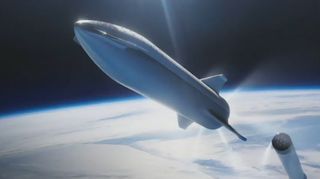
The private spaceflight company SpaceX aims to launch the first private mission around the moon in 2023 using its Big Falcon Rocket, with the historic flight being paid for by a Japanese billionaire with a lofty vision for space and art. Not since NASA's Apollo 17 mission, in December 1972, have humans visited the moon, so if SpaceX's flight sticks to its schedule, it could make history and beat NASA's own project to return astronauts to cislunar space.
See how SpaceX's Lunar BFR Mission, as it is called, will work here.
The passenger
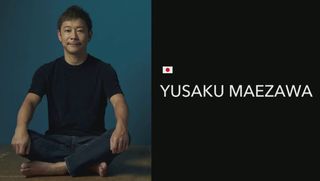
The Japanese billionaire backing SpaceX's first private moon launch is none other than Yusaku Maezawa, a former rock-band drummer and the founder of the Japanese online retailer Zozotown.
Maezawa has had a soft spot for the moon since his youth. "Ever since I was a kid, I have loved the moon." But he also loves art and fashion and has spent millions on his personal art collection.
When SpaceX unveiled Maezawa as the moon flight's passenger, CEO Elon Musk confirmed that the Japanese billionaire was also one of two people who signed on to fly around the moon on a Dragon spacecraft under a previous Falcon Heavy plan by SpaceX. The company has since scrapped that project in favor of the Lunar BFR Mission.
The new BFR spacecraft
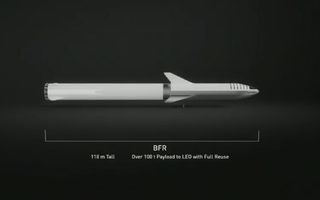
Maezawa will launch on yet another updated version of SpaceX's BFR rocket and spacecraft.
Musk first unveiled SpaceX's fully reusable BFR spacecraft in 2016 (when it was still called the Interplanetary Transport System) and then refined the design in 2017.
This final design is larger than the 2017 version and will stand 387 feet (118 meters) tall when fully assembled. It will be capable of flying up to 100 people and 100 tons (90 metric tons) of payload into space, Musk has said.
The crewed ship

Maezawa did not disclose how much he is paying for SpaceX's moon trip, but he did say he has purchased the entire flight. Musk said Maezawa has placed a "substantial" down payment and that the total cost represented a meaningful percentage of the total BFR development cost (which Musk estimated at about $5 billion). In 2017, Musk said the BFR crewed ship would have 40 staterooms for passengers, so that's a lot of space for just Maezawa.
Luckily, he's not planning on going alone.
Going to the moon with artists

"I choose to go to the moon with artists." Those were Maezawa's words when he was first announced as SpaceX's moon passenger.
While the moon has long fascinated Maezawa, the entrepreneur said he wanted his flight to have a special meaning, one that would also serve his goal of promoting peace across the world.
To do that, he will invite six to eight artists with him and SpaceX personnel on the Lunar BFR Mission to share the trip and create art. Because Maezawa is buying the entire BFR flight, the artists will fly for free.
Maezawa calls the project "#dearMoon" and has launched a website for it here: https://dearmoon.earth.
Artists in space

Maezawa has not revealed which artists he will invite on his moon trip. He openly wondered what an artist like Jean-Michel Basquiat, one of Maezawa's favorites, would have created if given the chance to explore the moon. When asked what he was looking forward to most for the mission, Maezawa said it was the artwork his guests would create when they saw the moon up close.
The moon mission

Now that we know who is flying on SpaceX's Lunar BFR Mission (and why), it's time to look at the mission itself.
According to SpaceX, the entire flight would take about a week, with Maezawa and his artist passengers lifting off aboard the crewed ship, cruising to the moon, performing a single flyby around the moon and then returning to Earth. The flight profile has much in common with NASA's Apollo 8 mission to the moon, except it will not enter lunar orbit.
Launch phase
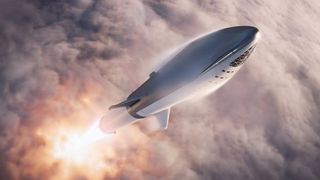
Like any major space mission, Maezawa's flight will begin at liftoff.
While early tests of the BFR spaceship will likely occur at SpaceX's southern Texas proving ground near Brownsville, the actual rocket may launch from a different site or from an offshore platform, Musk has said.
Maezawa's flight will not carry a full complement of 100 passengers but rather only the select few he chooses to join him and any SpaceX pilots or astronauts that may be required.
BFR stage separation
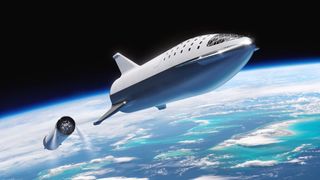
Two minutes and 51 seconds after launch, the BFR booster will separate from the crewed spaceship and head back to Earth.
Like SpaceX's Falcon 9 and Falcon Heavy rockets, the BFR booster will use its engines and grid fins to steer itself back to a landing site on Earth. The crewed ship, meanwhile, will continue into orbit.
Solar array deploy

Once in orbit (about an 8-minute trip), the BFS (Big Falcon Spaceship) will deploy its fan-like solar panels to generate power for cruising around the moon and back.
According to a SpaceX flight profile, it looks like the flight to the moon will take about two days.
Lunar flyby
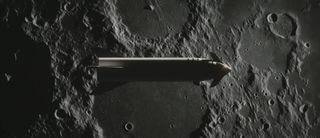
Just over two days into the trip, the lunar flyby will begin for Maezawa and his crew. The BFS will skim over the moon's surface, offering dazzling views of lunar craters and other terrain.
But there will be no stopover at the moon on this trip. The spacecraft will continue its trip around the moon, but not before its passengers witness a potentially life-altering sight.
Join our Space Forums to keep talking space on the latest missions, night sky and more! And if you have a news tip, correction or comment, let us know at: community@space.com.
Get the Space.com Newsletter
Breaking space news, the latest updates on rocket launches, skywatching events and more!

Tariq is the Editor-in-Chief of Space.com and joined the team in 2001, first as an intern and staff writer, and later as an editor. He covers human spaceflight, exploration and space science, as well as skywatching and entertainment. He became Space.com's Managing Editor in 2009 and Editor-in-Chief in 2019. Before joining Space.com, Tariq was a staff reporter for The Los Angeles Times covering education and city beats in La Habra, Fullerton and Huntington Beach. In October 2022, Tariq received the Harry Kolcum Award for excellence in space reporting from the National Space Club Florida Committee. He is also an Eagle Scout (yes, he has the Space Exploration merit badge) and went to Space Camp four times as a kid and a fifth time as an adult. He has journalism degrees from the University of Southern California and New York University. You can find Tariq at Space.com and as the co-host to the This Week In Space podcast with space historian Rod Pyle on the TWiT network. To see his latest project, you can follow Tariq on Twitter @tariqjmalik.
